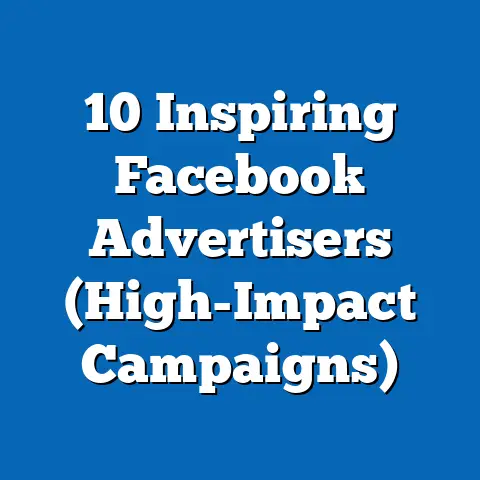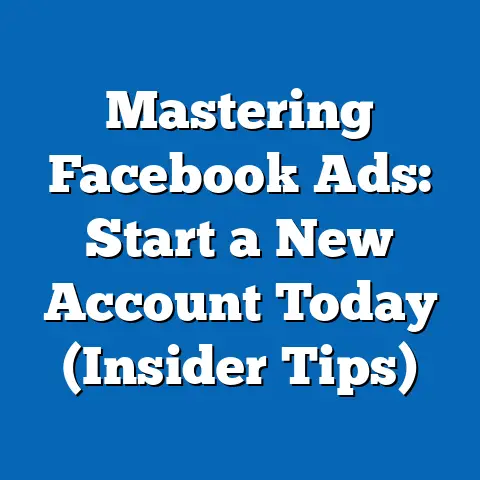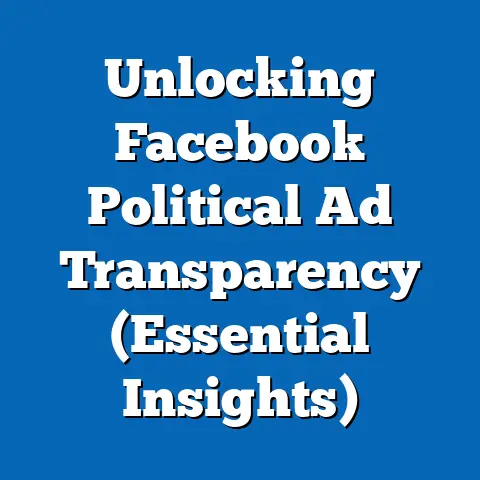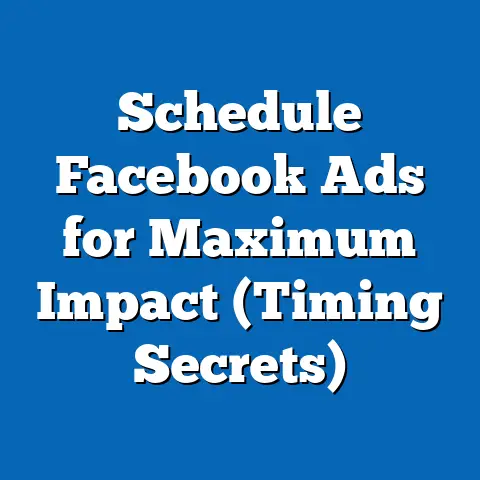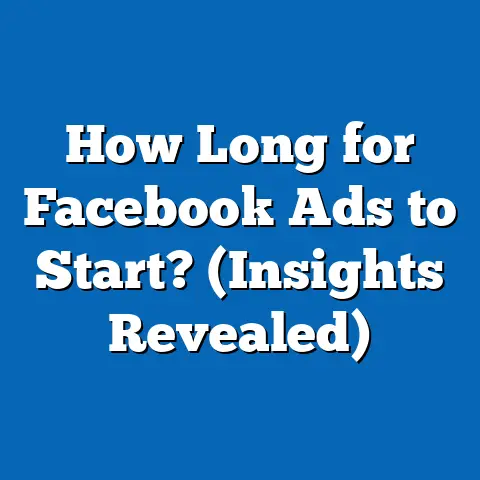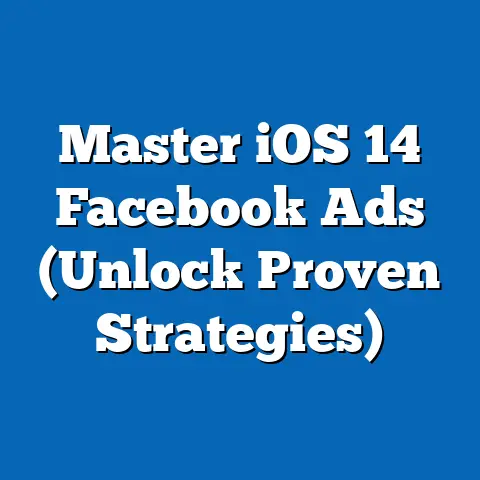Maximize ROI: Upload Email Lists for Facebook Ads (Pro Tips)
What if you could unlock a hidden treasure trove within your existing customer base, transforming them into a powerful engine for both repeat business and attracting new, similar customers? Imagine being able to directly connect with those who already know, like, and trust your brand, delivering personalized ads that resonate deeply and drive conversions through the roof. That’s precisely the power you unlock when you upload your email lists to Facebook Ads. It’s a strategy I’ve personally seen deliver incredible results, and I’m excited to share the pro tips that will help you maximize your ROI.
I remember when I first started experimenting with Custom Audiences. I had a client with a thriving e-commerce business, but their Facebook ad performance was plateauing. They were reaching a broad audience, but the engagement wasn’t as strong as we hoped. After uploading their email list and creating a Custom Audience, we saw an immediate surge in click-through rates and conversions. It was like we had flipped a switch, and suddenly, their ads were speaking directly to the people who mattered most.
Understanding the Importance of Email Lists in Facebook Advertising
Email lists are, without a doubt, one of the most valuable assets a business can possess. These aren’t just names and addresses; they represent individuals who have already expressed interest in your brand, whether by making a purchase, subscribing to a newsletter, or engaging with your content. They are your warm leads, your potential advocates, and a goldmine of opportunity for targeted advertising.
Think about it: someone who has already purchased from you is far more likely to do so again. They know your quality, trust your brand, and understand your value proposition. Targeting these individuals with relevant Facebook ads is like giving them a gentle nudge in the right direction, reminding them of what they love about your business and encouraging them to return.
Furthermore, existing customers can be incredibly effective at attracting new customers. By creating “Lookalike Audiences” based on your email list, you can reach individuals who share similar demographics, interests, and behaviors with your best customers. This is a powerful way to expand your reach and tap into a pool of potential customers who are highly likely to convert.
Custom Audiences are the key to unlocking this potential. They allow you to upload your email list directly into Facebook Ads Manager, creating a targeted audience that you can then use to deliver hyper-relevant ads. This eliminates the guesswork of broad targeting and ensures that your ads are seen by the people who are most likely to be interested in your products or services.
Key Takeaway: Your email list is a powerful asset. Use it to create Custom Audiences and unlock hyper-targeted advertising that drives conversions and maximizes ROI.
How to Prepare Your Email List for Upload
Before you jump into uploading your email list, it’s crucial to ensure it’s clean, accurate, and compliant with data privacy regulations. A poorly prepared list can lead to wasted ad spend, inaccurate targeting, and even potential legal issues.
Here’s a step-by-step guide to preparing your email list for optimal results:
-
Remove Duplicates: Duplicate email addresses can skew your targeting and waste your ad budget. Use a spreadsheet program like Excel or Google Sheets to identify and remove any duplicate entries. Most email marketing platforms also offer built-in deduplication tools.
-
Ensure Accuracy: Verify that the email addresses on your list are valid and active. Consider using an email verification service to identify and remove any invalid or inactive addresses. This will improve your match rate with Facebook and ensure that your ads are being delivered to real people.
-
Comply with Data Privacy Regulations: This is absolutely critical. Ensure that you have obtained proper consent from individuals before adding them to your email list. Comply with all relevant data privacy regulations, such as GDPR (General Data Protection Regulation) and CCPA (California Consumer Privacy Act). I always recommend including a clear and concise privacy policy on your website and in your email communications. Transparency is key to building trust with your audience and avoiding legal issues.
-
Format Your List Correctly: Facebook accepts email lists in the following formats:
- CSV (Comma Separated Values): This is the most common and recommended format.
- TXT (Text File): Ensure that each email address is on a separate line.
I recommend using CSV format whenever possible, as it’s generally the most reliable and compatible.
-
Include Additional Data (Optional): While email addresses are the primary identifier, you can also include additional data fields like first name, last name, phone number, and location. This can help Facebook improve its matching accuracy and allow you to further segment your audience. However, always ensure that you have obtained proper consent before including any additional personal data.
Remove Duplicates: Duplicate email addresses can skew your targeting and waste your ad budget. Use a spreadsheet program like Excel or Google Sheets to identify and remove any duplicate entries. Most email marketing platforms also offer built-in deduplication tools.
Ensure Accuracy: Verify that the email addresses on your list are valid and active. Consider using an email verification service to identify and remove any invalid or inactive addresses. This will improve your match rate with Facebook and ensure that your ads are being delivered to real people.
Comply with Data Privacy Regulations: This is absolutely critical. Ensure that you have obtained proper consent from individuals before adding them to your email list. Comply with all relevant data privacy regulations, such as GDPR (General Data Protection Regulation) and CCPA (California Consumer Privacy Act). I always recommend including a clear and concise privacy policy on your website and in your email communications. Transparency is key to building trust with your audience and avoiding legal issues.
Format Your List Correctly: Facebook accepts email lists in the following formats:
- CSV (Comma Separated Values): This is the most common and recommended format.
- TXT (Text File): Ensure that each email address is on a separate line.
I recommend using CSV format whenever possible, as it’s generally the most reliable and compatible.
Include Additional Data (Optional): While email addresses are the primary identifier, you can also include additional data fields like first name, last name, phone number, and location. This can help Facebook improve its matching accuracy and allow you to further segment your audience. However, always ensure that you have obtained proper consent before including any additional personal data.
Example of a properly formatted CSV file:
email,firstname,lastname
john.doe@example.com,John,Doe
jane.smith@example.com,Jane,Smith
peter.jones@example.com,Peter,Jones
Common Pitfalls to Avoid:
- Using outdated or inaccurate data: This can lead to wasted ad spend and poor targeting.
- Violating data privacy regulations: This can result in legal penalties and damage to your brand reputation.
- Uploading an improperly formatted list: This can prevent Facebook from accurately matching your data.
Key Takeaway: A clean, accurate, and compliant email list is essential for successful Facebook advertising. Take the time to prepare your list properly to maximize your results.
Uploading Your Email List to Facebook
Now that your email list is prepped and ready to go, it’s time to upload it to Facebook Ads Manager. Here’s a detailed walkthrough of the process:
-
Navigate to Audiences: In Facebook Ads Manager, click on the menu icon (three horizontal lines) in the top left corner and select “Audiences.”
-
Create a Custom Audience: Click on the “Create Audience” button and select “Custom Audience.”
-
Choose “Customer List”: In the “Create a Custom Audience” window, select “Customer List.”
-
Prepare Your File: You’ll be presented with a few options. If you have a properly formatted CSV or TXT file, choose “Upload list.” You can also copy and paste data directly from a spreadsheet or import from Mailchimp.
-
Upload Your File: Click “Next” and then “Upload File.” Select the CSV or TXT file from your computer.
-
Map Your Data: Facebook will attempt to automatically map the data fields in your file to the corresponding fields in Facebook. Review the mapping to ensure accuracy. If necessary, you can manually map the fields by clicking on the dropdown menus and selecting the appropriate options.
-
Name Your Audience: Give your Custom Audience a descriptive name that will help you easily identify it later. For example, “Existing Customers – Newsletter Subscribers.”
-
Create Audience: Click “Create Audience.” Facebook will begin processing your list and matching the email addresses to Facebook users.
-
Wait for Processing: The processing time can vary depending on the size of your list. Facebook will notify you when the audience is ready to use.
Navigate to Audiences: In Facebook Ads Manager, click on the menu icon (three horizontal lines) in the top left corner and select “Audiences.”
Create a Custom Audience: Click on the “Create Audience” button and select “Custom Audience.”
Choose “Customer List”: In the “Create a Custom Audience” window, select “Customer List.”
Prepare Your File: You’ll be presented with a few options. If you have a properly formatted CSV or TXT file, choose “Upload list.” You can also copy and paste data directly from a spreadsheet or import from Mailchimp.
Upload Your File: Click “Next” and then “Upload File.” Select the CSV or TXT file from your computer.
Map Your Data: Facebook will attempt to automatically map the data fields in your file to the corresponding fields in Facebook. Review the mapping to ensure accuracy. If necessary, you can manually map the fields by clicking on the dropdown menus and selecting the appropriate options.
Name Your Audience: Give your Custom Audience a descriptive name that will help you easily identify it later. For example, “Existing Customers – Newsletter Subscribers.”
Create Audience: Click “Create Audience.” Facebook will begin processing your list and matching the email addresses to Facebook users.
Wait for Processing: The processing time can vary depending on the size of your list. Facebook will notify you when the audience is ready to use.
Troubleshooting Tips:
-
Low Match Rate: If you’re experiencing a low match rate (i.e., Facebook is not matching a significant portion of your email addresses to Facebook users), consider the following:
- Verify Email Address Accuracy: Double-check that the email addresses on your list are valid and active.
- Ensure Proper Formatting: Make sure your email list is properly formatted in CSV or TXT format.
- Include Additional Data: Adding additional data fields like first name, last name, and phone number can help Facebook improve its matching accuracy.
-
Error Messages: If you encounter any error messages during the upload process, carefully review the message and follow the instructions provided. Common errors include improperly formatted files, missing data fields, and exceeding file size limits.
Low Match Rate: If you’re experiencing a low match rate (i.e., Facebook is not matching a significant portion of your email addresses to Facebook users), consider the following:
- Verify Email Address Accuracy: Double-check that the email addresses on your list are valid and active.
- Ensure Proper Formatting: Make sure your email list is properly formatted in CSV or TXT format.
- Include Additional Data: Adding additional data fields like first name, last name, and phone number can help Facebook improve its matching accuracy.
Error Messages: If you encounter any error messages during the upload process, carefully review the message and follow the instructions provided. Common errors include improperly formatted files, missing data fields, and exceeding file size limits.
Key Takeaway: Uploading your email list to Facebook is a straightforward process, but it’s important to follow the steps carefully and troubleshoot any issues that may arise.
Creating Targeted Ads from Your Custom Audience
Now that you’ve created your Custom Audience, the real magic begins: crafting targeted ads that resonate with your existing customers. The key here is relevance. You already know these people are interested in your brand, so tailor your messaging to their specific needs and interests.
Here are some ad types that work particularly well with Custom Audiences:
-
Retargeting Ads: These ads are designed to re-engage customers who have previously interacted with your website or app. For example, you can show ads to people who abandoned their shopping cart, viewed specific product pages, or downloaded a lead magnet. Retargeting ads are incredibly effective at driving conversions because they target individuals who are already familiar with your brand and have demonstrated a clear interest in your products or services.
-
Promotional Offers: Reward your loyal customers with exclusive discounts, special offers, and early access to new products. This is a great way to show your appreciation and encourage repeat purchases.
-
Product Updates: Keep your customers informed about new product releases, updates, and improvements. This demonstrates that you’re actively investing in your products and that you value their feedback.
-
Content Marketing: Share valuable content that is relevant to your customers’ interests. This can include blog posts, articles, videos, and infographics. Content marketing helps you build trust with your audience and establish yourself as a thought leader in your industry.
-
Lookalike Audiences: As mentioned earlier, Lookalike Audiences allow you to reach new customers who share similar characteristics with your existing customers. This is a powerful way to expand your reach and tap into a pool of potential customers who are highly likely to convert.
Retargeting Ads: These ads are designed to re-engage customers who have previously interacted with your website or app. For example, you can show ads to people who abandoned their shopping cart, viewed specific product pages, or downloaded a lead magnet. Retargeting ads are incredibly effective at driving conversions because they target individuals who are already familiar with your brand and have demonstrated a clear interest in your products or services.
Promotional Offers: Reward your loyal customers with exclusive discounts, special offers, and early access to new products. This is a great way to show your appreciation and encourage repeat purchases.
Product Updates: Keep your customers informed about new product releases, updates, and improvements. This demonstrates that you’re actively investing in your products and that you value their feedback.
Content Marketing: Share valuable content that is relevant to your customers’ interests. This can include blog posts, articles, videos, and infographics. Content marketing helps you build trust with your audience and establish yourself as a thought leader in your industry.
Lookalike Audiences: As mentioned earlier, Lookalike Audiences allow you to reach new customers who share similar characteristics with your existing customers. This is a powerful way to expand your reach and tap into a pool of potential customers who are highly likely to convert.
Crafting Compelling Ad Copy and Creatives:
-
Personalize Your Messaging: Use the data you have about your customers to personalize your ad copy and creatives. For example, you can mention their first name in the ad copy or show them products that they have previously viewed.
-
Highlight the Benefits: Focus on the benefits of your products or services, rather than just the features. Explain how your products can solve their problems and improve their lives.
-
Use Strong Calls to Action: Tell your customers exactly what you want them to do. Use clear and concise calls to action like “Shop Now,” “Learn More,” or “Get Started.”
-
Use High-Quality Visuals: Use high-quality images and videos that are visually appealing and relevant to your ad copy.
Personalize Your Messaging: Use the data you have about your customers to personalize your ad copy and creatives. For example, you can mention their first name in the ad copy or show them products that they have previously viewed.
Highlight the Benefits: Focus on the benefits of your products or services, rather than just the features. Explain how your products can solve their problems and improve their lives.
Use Strong Calls to Action: Tell your customers exactly what you want them to do. Use clear and concise calls to action like “Shop Now,” “Learn More,” or “Get Started.”
Use High-Quality Visuals: Use high-quality images and videos that are visually appealing and relevant to your ad copy.
Key Takeaway: Target your Custom Audience with relevant ads that are tailored to their specific needs and interests. Use personalized messaging, highlight the benefits, and include strong calls to action.
Analyzing Performance and Maximizing ROI
Running targeted ads is only half the battle. The other half is analyzing your performance and making data-driven decisions to optimize your campaigns for maximum ROI.
Here are some key metrics to monitor when running ads targeted at uploaded email lists:
-
Match Rate: This metric tells you the percentage of email addresses in your list that Facebook was able to match to Facebook users. A higher match rate indicates a cleaner and more accurate list.
-
Reach: This metric tells you the number of unique individuals who saw your ads.
-
Impressions: This metric tells you the number of times your ads were displayed.
-
Click-Through Rate (CTR): This metric tells you the percentage of people who saw your ad and clicked on it. A higher CTR indicates that your ad copy and creatives are resonating with your audience.
-
Conversion Rate: This metric tells you the percentage of people who clicked on your ad and completed a desired action, such as making a purchase or filling out a form. A higher conversion rate indicates that your ads are effectively driving results.
-
Cost Per Acquisition (CPA): This metric tells you the average cost of acquiring a new customer through your ads. A lower CPA indicates that your ads are more cost-effective.
-
Return on Ad Spend (ROAS): This metric tells you the amount of revenue you generated for every dollar you spent on ads. A higher ROAS indicates that your ads are generating a strong return on investment.
Match Rate: This metric tells you the percentage of email addresses in your list that Facebook was able to match to Facebook users. A higher match rate indicates a cleaner and more accurate list.
Reach: This metric tells you the number of unique individuals who saw your ads.
Impressions: This metric tells you the number of times your ads were displayed.
Click-Through Rate (CTR): This metric tells you the percentage of people who saw your ad and clicked on it. A higher CTR indicates that your ad copy and creatives are resonating with your audience.
Conversion Rate: This metric tells you the percentage of people who clicked on your ad and completed a desired action, such as making a purchase or filling out a form. A higher conversion rate indicates that your ads are effectively driving results.
Cost Per Acquisition (CPA): This metric tells you the average cost of acquiring a new customer through your ads. A lower CPA indicates that your ads are more cost-effective.
Return on Ad Spend (ROAS): This metric tells you the amount of revenue you generated for every dollar you spent on ads. A higher ROAS indicates that your ads are generating a strong return on investment.
A/B Testing for Continuous Improvement:
A/B testing is a powerful technique for optimizing your ad campaigns. It involves creating two or more variations of an ad and testing them against each other to see which one performs better.
Here are some elements you can A/B test:
-
Ad Copy: Test different headlines, body text, and calls to action.
-
Creatives: Test different images and videos.
-
Targeting: Test different targeting options, such as age, gender, location, and interests.
-
Placement: Test different ad placements, such as Facebook Feed, Instagram Feed, and Audience Network.
Ad Copy: Test different headlines, body text, and calls to action.
Creatives: Test different images and videos.
Targeting: Test different targeting options, such as age, gender, location, and interests.
Placement: Test different ad placements, such as Facebook Feed, Instagram Feed, and Audience Network.
By continuously A/B testing your ads, you can identify the most effective combinations of ad copy, creatives, targeting, and placement, and optimize your campaigns for maximum ROI.
Key Takeaway: Monitor your campaign performance, analyze your metrics, and use A/B testing to continuously optimize your ads for maximum ROI.
Case Studies and Success Stories
To illustrate the power of using email lists in Facebook ad campaigns, let’s take a look at a couple of brief case studies:
-
E-Commerce Retailer: A clothing retailer uploaded their email list of past purchasers and created a Custom Audience. They then ran retargeting ads showcasing new arrivals and offering exclusive discounts to this audience. The result was a 30% increase in repeat purchases and a significant boost in overall sales.
-
Subscription Service: A subscription box company used their email list to create a Lookalike Audience on Facebook. They targeted this audience with ads highlighting the benefits of their subscription and offering a free trial. The campaign resulted in a 20% increase in new subscribers and a significant expansion of their customer base.
E-Commerce Retailer: A clothing retailer uploaded their email list of past purchasers and created a Custom Audience. They then ran retargeting ads showcasing new arrivals and offering exclusive discounts to this audience. The result was a 30% increase in repeat purchases and a significant boost in overall sales.
Subscription Service: A subscription box company used their email list to create a Lookalike Audience on Facebook. They targeted this audience with ads highlighting the benefits of their subscription and offering a free trial. The campaign resulted in a 20% increase in new subscribers and a significant expansion of their customer base.
These are just two examples of how businesses can effectively use email lists in their Facebook ad campaigns to drive results and maximize ROI.
Key Takeaway: Real-world examples demonstrate the effectiveness of using email lists in Facebook ad campaigns to drive results and maximize ROI.
Conclusion
Uploading email lists to Facebook Ads is a powerful strategy for maximizing your ROI and driving advertising success. By targeting your existing customers and leveraging Lookalike Audiences, you can reach the people who are most likely to be interested in your products or services, deliver hyper-relevant ads, and generate a strong return on investment.
Remember to prepare your email list properly, upload it to Facebook Ads Manager, create targeted ads, analyze your performance, and continuously optimize your campaigns for maximum results.
By implementing the pro tips shared in this article, you can unlock the potential of your email lists and transform your Facebook advertising strategy.
Call to Action
Have you tried uploading your email lists to Facebook Ads? What results have you seen? Share your experiences in the comments below! And if you’re looking for more insights on maximizing your digital marketing efforts, subscribe to our newsletter for the latest tips, tricks, and strategies. Let’s work together to drive your advertising success!

